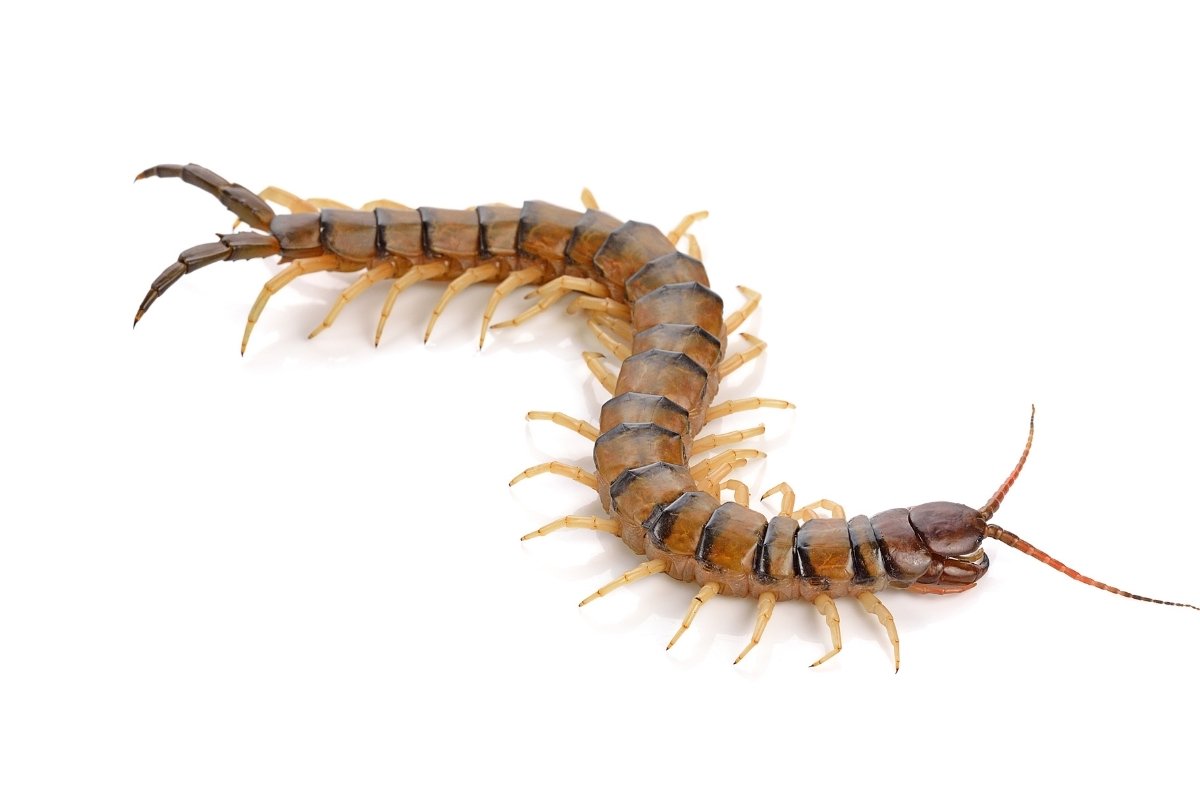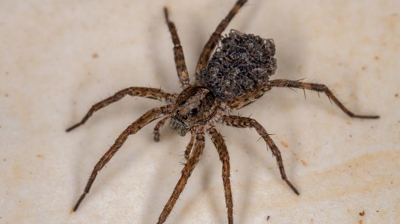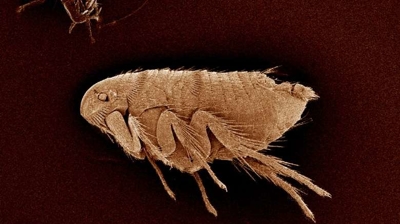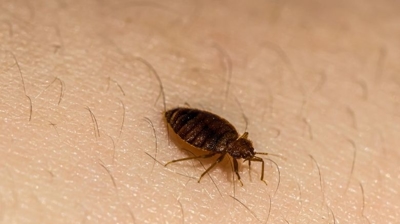
Centipedes

Are Centipedes Harmful?
Centipedes are capable of biting, and some centipedes have venomous fangs that they use to capture and immobilize their prey. However, centipedes are generally not aggressive toward humans and only bite in self-defense when they feel threatened or cornered. Here are some important details about centipede bites:
- Venomous Fangs: Centipedes have a pair of modified front legs called forcipules, which are equipped with venom glands and fangs. These forcipules are located near the head and are used to inject venom into their prey.
- Painful but Generally Not Dangerous: Centipede bites can be painful and cause localized discomfort. The severity of the bite depends on various factors, including the size and species of the centipede and the individual's sensitivity to the venom. In most cases, centipede bites are not considered medically significant, and the pain and symptoms typically subside within a few hours to a couple of days.
- Allergic Reactions: Some individuals may experience allergic reactions to centipede venom, which can result in more severe symptoms, such as swelling, redness, and prolonged pain. In rare cases, severe allergic reactions may require medical attention.
- Prevention: To avoid centipede bites, it's best to refrain from handling these creatures. If you encounter a centipede, it's advisable to use caution and not provoke or handle it. Wear gloves when gardening or working in areas where centipedes might be present to reduce the risk of accidental bites.
- First Aid: If bitten by a centipede, clean the wound with soap and water and apply a mild antiseptic to reduce the risk of infection. Over-the-counter pain relievers and cold compresses can help alleviate pain and swelling. If you experience an allergic reaction or severe symptoms, seek medical attention.
While centipede bites can be uncomfortable, they are not typically life-threatening, and fatalities from centipede bites are extremely rare. Most centipede species are more interested in hunting small invertebrates and do not view humans as prey. As such, centipede bites are usually a defensive response to perceived threats.
Learn more: What Do Centipedes Look Like? || What Do Centipedes Eat?
Centipede Removal
Centipedes become a concern primarily because their presence often signals broader conditions inside a home or building that can escalate into bigger problems. Although most species are not aggressive and generally avoid people, they thrive in damp, dark, and cluttered environments—areas that often overlap with the conditions that support far more destructive pests such as termites, roaches, ants, and rodents. When centipedes appear regularly, it usually means there is underlying moisture, hidden organic debris, or a steady food supply of insects that are already active indoors. Addressing them therefore isn’t just about getting rid of an unpleasant sight; it’s about removing the deeper issues that attracted them in the first place.
Centipedes can also create discomfort, especially when they move quickly or show up unexpectedly in bathrooms, basements, or bedrooms. Their bites are uncommon, but when they do occur, they can cause localized pain and swelling similar to a bee sting—an added concern in homes with children, pets, or individuals with sensitive skin. Even without direct harm, their appearance alone can be unsettling enough to affect sleep, peace of mind, and a sense of cleanliness.
Moreover, allowing centipedes to remain often means tolerating whatever they are feeding on. Since they are predators, an ongoing centipede problem is essentially an indicator that the insect population inside the structure is robust enough to sustain them. Eliminating centipedes forces a broader cleanup: reducing moisture, sealing entry points, removing clutter, and targeting other insects they prey upon. Doing so improves overall sanitation and reduces the risk of more serious infestations taking hold.
Centipedes matter because they reveal more than they directly cause. Removing them helps restore comfort, reduce secondary pest activity, and correct indoor conditions that could otherwise escalate into expensive or difficult pest issues down the line.
Learn more: How To Get Rid Of Centipedes
Centipede Control
Hiring our professional centipede control is a smart investment if you’re dealing with these fast-moving, unsettling pests in your home or business. While centipedes don’t typically cause property damage, their presence often signals underlying pest issues and can create discomfort for occupants. Here’s why our professional services are the best solution:
- Correct Identification and Inspection: Centipedes thrive in damp, dark environments such as basements, bathrooms, crawl spaces, and under debris. Our professionals don’t just eliminate centipedes—we identify the conditions that attract them and the secondary pests they prey on, like spiders, silverfish, and cockroaches. This root-cause approach ensures a long-term solution instead of just temporary relief.
- Targeted and Safe Treatments: Centipedes are fast, nocturnal, and excellent at hiding, making them difficult to control with store-bought sprays or DIY methods. Our professionals use proven, safe treatments that target both the centipedes and the pests they feed on. These treatments are applied precisely and strategically, minimizing risk to your family, pets, and property.
- Prevention of Larger Pest Problems: Because centipedes are predatory, their presence often points to a larger insect problem. Our professional inspection and treatment plan will not only reduce centipedes but also address the food source attracting them—providing broader pest protection for your home or business.
- Long-Term Control and Peace of Mind: DIY efforts often chase centipedes from one hiding spot to another without truly solving the issue. Our professionals develop ongoing prevention strategies, including sealing entry points, moisture control recommendations, and recurring services if needed. This ensures centipedes don’t come back and your space stays protected.
- Protection for Homes and Businesses: For homeowners, centipedes can be unsettling and difficult to eliminate once they establish themselves indoors. For businesses—especially those in hospitality, food service, or healthcare—just one sighting can harm your reputation. Our professional centipede control guarantees a faster, discreet, and more reliable resolution.
Hiring our professionals means eliminating centipedes quickly, addressing the underlying pest problem, and keeping your environment comfortable, safe, and pest-free.
Centipede Exterminators
Choosing our local exterminators over a national chain delivers stronger, faster, and more reliable results—especially for something as condition-specific as a centipede problem. Our local professionals work in the same climate, soil conditions, and seasonal patterns you do, so we understand exactly when centipedes surge, which hidden moisture pockets tend to attract them in your area, and what secondary pests typically support their population. That familiarity allows us to diagnose the root cause more accurately and tailor a strategy that addresses the problem at its source rather than applying a one-size-fits-all program.
Working with our local team also means dealing with people who have a direct stake in the community. Reputation matters far more to our local team than to large national brands with call centers and rotating technicians. As a result, you usually get better communication, more thorough inspections, and consistent follow-up from someone who knows your property and remembers its history. This level of continuity makes it much easier to prevent centipedes from returning, because the same technician can track subtle changes in moisture, entry points, or insect activity over time.
On the practical side, our local exterminators are more responsive during urgent situations. Instead of waiting days for scheduling through a corporate system, our customers often get same-day or next-day service from nearby technicians who can act immediately when centipede activity spikes. We are also more flexible with treatment types, product choices, and integrated solutions, allowing us to use what is most effective and safest for your specific structure rather than what a standardized corporate protocol dictates.
Ultimately, the advantage lies in precision and accountability. Our local professionals provide hands-on expertise, faster service, and long-term prevention based on real-world experience with the exact conditions driving centipede problems in the area—something a distant national company simply can’t match at the same level of detail or personal commitment.
Centipede Solutions
Our exterminators use Integrated Pest Management (IPM) to control centipedes because their presence indoors is usually linked to underlying moisture problems and the availability of other insects they feed on. IPM begins with a thorough inspection to identify where centipedes are entering, where they are hiding, and what environmental conditions are supporting them, such as excess humidity, water leaks, or cluttered basements and crawl spaces. Management strategies focus on habitat modification, including reducing moisture through improved ventilation or repairs, sealing cracks and gaps, and eliminating the insects that serve as their food source. Targeted treatments, such as localized insecticide applications, are used only when necessary and applied to specific areas rather than throughout the structure. Ongoing monitoring ensures that conditions remain unfavorable for centipedes and helps prevent reinfestation. By addressing the root causes instead of relying solely on chemicals, IPM provides a long-term, effective, and environmentally responsible solution for centipede control.
Where Are Centipedes Found?
Centipedes can be found in a wide range of terrestrial habitats around the world. They are particularly diverse in tropical regions but can also be encountered in temperate and even arid environments. Here are some common places where you might find centipedes:
- Leaf Litter: Centipedes are often found beneath fallen leaves and other organic debris on the forest floor. Leaf litter provides them with a humid and sheltered environment where they can hunt for prey and hide from predators.
- Soil and Moist Soil: Many centipede species burrow into the soil or reside in moist soil, especially in gardens, agricultural fields, and woodland areas. They create burrows or tunnels in the ground and come out to hunt at night. .
- Logs and Rotting Wood: Centipedes are known to inhabit decaying logs and rotting wood. These materials provide a suitable habitat and a source of prey, such as insects and other arthropods.
- Rocky Habitats: Some centipede species prefer rocky environments, such as cliffs, rocky outcrops, or caves. These habitats offer protection and opportunities to find prey.
- Caves: Certain cave-dwelling centipede species have adapted to life in dark, underground environments. They are specially adapted to thrive in the challenging conditions of caves.
- Moist Areas: Centipedes are highly sensitive to desiccation (drying out), so they are often found in areas with high humidity. This includes damp basements, crawl spaces, and bathrooms in homes.
- Gardens and Yards: Centipedes can also be present in gardens, especially in areas with lush vegetation and organic matter. They may hide under pots, rocks, or mulch during the day.
- Tropical Rainforests: In tropical rainforests, centipedes are abundant on the forest floor and in the leaf litter. These environments provide them with a rich source of food and shelter.
- Deserts: While less common, some centipede species have adapted to desert environments. They are often found in burrows or beneath rocks, where conditions are cooler and more humid than the surrounding desert.
- Human Structures: Centipedes can occasionally find their way into homes, particularly if there are entry points such as cracks in walls or foundations. They may seek refuge in dark, damp areas like basements, bathrooms, or crawl spaces.
Centipedes are primarily nocturnal creatures, so you're more likely to encounter them at night. While centipedes are generally harmless to humans, some larger species may deliver a painful bite if handled, so it's advisable to observe them from a safe distance and avoid touching them.
Learn more: How Bad Is It To Have Centipedes In My Home?
Learn more: What To Do About Centipedes In Your Home
Centipede Life Cycle
The life cycle of centipedes is characterized by a series of stages, including egg-laying, hatching, and several juvenile stages before reaching adulthood. Centipedes are arthropods, and their life cycle is similar to that of other arthropods, such as insects and spiders. Here is a comprehensive overview of the life cycle of centipedes:
- Egg Stage: The life cycle of centipedes begins with the laying of eggs. Female centipedes typically lay their eggs in hidden, sheltered locations, such as underground burrows, crevices, or within organic matter like rotting wood or leaf litter. The exact number of eggs and the time it takes for them to hatch varies among species.
- Hatching: After a period of incubation, which can range from a few weeks to several months, depending on environmental conditions, the centipede eggs hatch. The emerging juvenile centipedes are known as "nymphs."
- Nymph Stage: Nymphs resemble miniature versions of adult centipedes but are smaller and lack the full complement of legs. They typically have only a few pairs of legs when they hatch, and they gradually develop more leg pairs as they molt and grow.
- Molting: Like other arthropods, centipedes grow by molting, shedding their exoskeleton to accommodate their increasing size. During each molt, the nymphs gain additional leg pairs and body segments until they reach maturity. The number of molts varies among species, but it is usually between 5 and 12 molts before reaching adulthood.
- Juvenile Development: As centipedes continue to molt and grow, they become increasingly similar in appearance to adult centipedes. The number of leg pairs and body segments increases with each molt, and they develop their characteristic venomous fangs.
- Adulthood: Once centipedes reach maturity, they have their full complement of body segments and leg pairs. Depending on the species, they can have anywhere from 15 to over 100 leg pairs. At this stage, they are capable of reproduction.
- Reproduction: Adult centipedes reproduce by mating. Males and females locate each other through pheromone signals or other sensory cues. After mating, females lay eggs in suitable locations, and the life cycle begins anew.
- Lifespan: The lifespan of centipedes varies among species, but most centipedes live for several years. Some larger species can live for up to a decade or more under the right conditions.
Centipedes are solitary creatures and do not exhibit parental care. Once the eggs are laid and the nymphs hatch, they are on their own and must fend for themselves. Their success in finding food and suitable shelter is crucial for their survival and development through the various life stages.
Centipede Types
The United States is home to a variety of centipede species, representing different families and types. Here is one of the common types of centipedes found in the United States:
- House Centipede (Scutigera coleoptrata): House centipedes are one of the most commonly encountered centipede species in homes across the United States. They have long, slender bodies and distinctive long legs. House centipedes are beneficial as they feed on other household pests, but their appearance can be startling to some people.
While most centipedes in the United States are not dangerous to humans, some larger species, such as the giant desert centipede, can deliver painful bites, and individuals with allergies or sensitivities may experience more severe reactions. When encountering centipedes, especially venomous ones, it's advisable to exercise caution and avoid handling them.

Hear From Our Happy Customers
-
"Professional & Considerate"
I’m pleased with Miche services. Jarvis came today. Professional and considerate. Thank you!
- Judy B. -
"Great Communication"
Tech was on time, communication was great, and he accommodated my needs.
- Alonzo W. -
"Exceeds Expectations"
I can’t say enough positive things about this company... The tech that came out, Jarvis went above and beyond my expectations. Thank you guys, I will continue using your services.
- Jake M. -
"Very Knowledgeable"
The tech that arrived was courteous, professional, and very knowledgeable. He was Great.
- Uerial I. -
"Wonderful Service"
Wonderful service. Jarvis is great. Took care of everything I needed. Thank you!
- Henry P. -
"Fantastic & Patient"
Jarvis was fantastic and patient. He answered my questions with an in-depth explanation and addressed all of my areas of concern. Would love for him to be my assigned tech going forward. Well done!
- Yonnette M.



